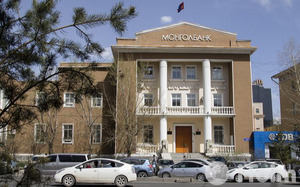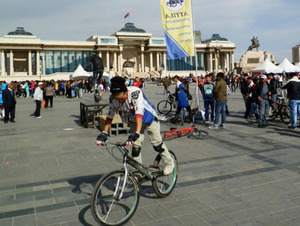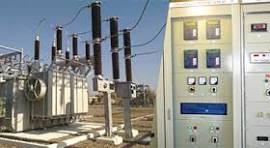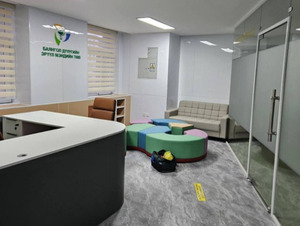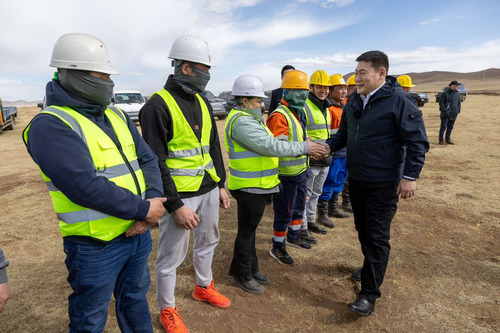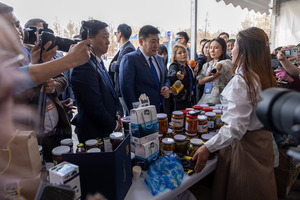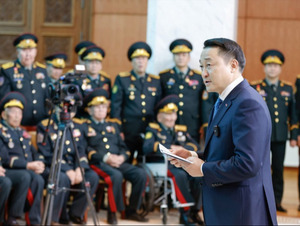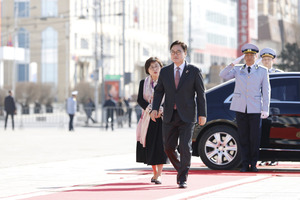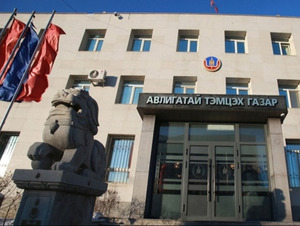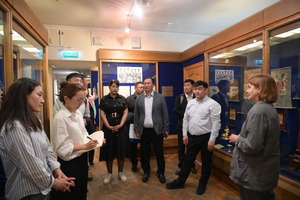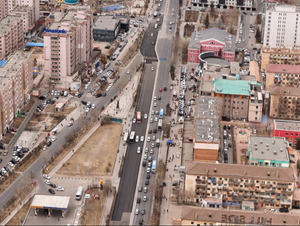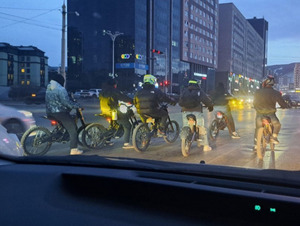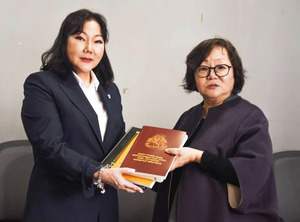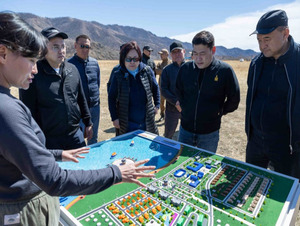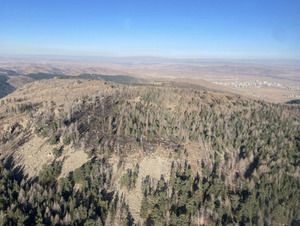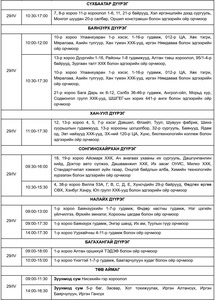
We interviewed D.Gansukh, Ph.D, Head of the Tourism Education and Training Center, about current situation of the tourism industry of Mongolia.
-Will you please summarize the current situation of the tourism industry of Mongolia?
-It varies for every country how it defines and regulates the industries directly related to tourism. Highly developed countries deem tourism as activities and places to not only receive and send off the tourists but also to travel, eat, watch performances, be entertainedand stay overnight. They have created productive economies uniting all these services into one structure and specifically defining their policies. It is different for developing countries. Regulations of developing countries vary depending on which industry had dominated in their past economy. For instance, animal husbandry, agriculture and mining activities and investment were dominating in Mongolia for a long time. Basically until 1990s tourism was deemed as entertainment of capitalists and no state support was provided to this industry. Therefore, the question is how investment should be attracted after revising governmental policies and involving other relevant industries. If we follow the rules of market economy, it is now required to regulate state involvement and define where and how the government should and should not be involved. Among developing countries, island countries such as Maldives, Vietnam, Taiwan and Thailand are leading in this industry. These countries are located in the subtropics and do not have mineral resources or livestock industry, thus their tourism sector development speed has been gradual and fast. They have been able to develop tourism as everybody, from the fisherman till the Government Leader, acknowledge that it is the only sector they can make money from. Therefore, the leading airlines have flights to these countries, high class hotels are built and there is everything to entertain people.
-What should we do to develop our tourism industry at the similar speed?
-When mining and production industries are the main sectors of the economy, usually their tourism develops at a lower speed. If we accelerate development of tourism, we will increase the current number of tourists, i.e. 470000 per year, and we can improve our rating among Asian countries. This development speed will depend on proper definition of the goals and objectives and competition at the international level. Among 26 Asian countries Mongolia ranks the 19th with its tourism competitiveness. We should focus on our goal to improve our ranking in the coming 5 years and become one of the top 10.
-It seems we are not being able to leave behind the thought that mineral resources are our main source of income. The current Government has set tourism as one of its leading industries but it has not produced any significant results yet. But there are many countries in the world where tourism is the major industry in their economies. In your opinion, will this sector be able to make up 30 or 40 percent of the economy on its own in the future?
-Based on estimates based on current performance, if we strengthen and implement our policies now taking advantage of the limited speed of mining industry development, limited mineral resources, its environmental impact and misunderstanding of investors, we have the potential and possibilities to increase the growth of tourism sector to up to 20% in the coming decade. It will be hard to make it more than 20%. In other words, we must develop economic variety and support sustainable development. According to actual resources such as our current capacity, transportation, hotels, tourist camps and land, there is a potential for tourism to make up over 20% of export in the coming 10-15 years. In 1990-1995 when mining had not developed much, tourism was extremely developing making up 15% of export revenue. When economy of a small country expands it seems percentage of tourism decreases. However, its development depends on our competitiveness and involvement in the regional and international tourism market rather than its economic value. In terms of international market and economy, tourism is a competition among territories. Otherwise, people will not decide to visit Mongolia because of its Ramada hotel. Only after they make a decision to go to Mongolia they will look for hotels. This means tourism’s structure comprises of two economic parts. First part is domestic benefits such as categorization of home country economy as we discussed, contribution to local communities, creation of jobs for citizens and increase of purchases from local citizens. Second part is the foreign trade capacity of Mongolia to compete with other countries.
-What do you think we should do in the tourism industry to make money? In other words, what would be its product?
-It is a very interesting question. I have never been asked this before. The most specific aspect of tourism is that the quality indicator depends on how satisfied the tourists are and what memories they have obtained but not on souvenirs they purchased or meals they had. It is the combination of all above things. This product will be defined by preparation and organization of proper tour programs to meet interests and satisfaction of the people who arrived in our country and how productively they spend their time here. The product had quite a limited form in terms of approach. For instance, options to drive from Ulaanbaatar city to Janchivlan people were limited to a stop at Tsonjin Boldog or drive directly from Nalaikh. But now decisions are made based on interests and wishes of the tourists, whether they want to leave UB directly or stop at the Tuul River for half an hour for sightseeing or to organize a hike around Nalaikh. In other words, the product is being defined by the tourists themselves. It does not make sense to offer the same thing to people who are of different age, gender, education and wealth. This is probably the feature that distinguishes tourism from other sectors.
-Does it mean it should be organized in a manner that out of 10 persons 9 accept what has been prepared for them?
-Indeed. Otherwise, the product image that has become the advantage of the given land and tourist camps will disappear. Then the visitors’ expected satisfaction will not be fulfilled. It means we should make good tourism product and brand out of what we have. Bulgan province people should make their airagtheir brand while Khuvsgul people their nature.
-What is important to become accepted?
-According to business terms, promises made at the market and their implementation must be the same. For example, if you promised a great pleasure from seeing the sunrise from a mountain you have to give it. It is also important to plan what to do in case it rains or gets cloudy. Tour operator companies and supporting non-governmental organizations should carry out their activities at the highest professional manner. Number of non-professional voluntary tour organizers who give false promises should be reduced. There have been cases when some companies that offer tours to foreign countries did not fulfil their promises and the tourists had to seek government assistance to return to home country. Also activities of some national companies do not meet standard requirements. Licenses and operations of such companies should be suspended and even liabilities should be imposed.
-The laws are adopted with a lot of promotion but their implementation is not always monitored. We can take the Anti-tobacco law as an example. How tourism activities of tourist camps are monitored?
-We are currently working on approving the revised Law on Tourism. We are working to reflect better regulation ofvarious issues related to tourism and improve its harmony with other relevant sectors based on our observations of international practices. Briefly, in the revised law we are more concerned about regulation of voluntary tour providers which add on hidden economy and increase revenue that is not taxed.
-Satisfaction of tourists definitely varies. How much do you think tourists advise their family and friends to travel Mongolia after they return? Is there any survey or statistics in this regard?
-International tourist survey has been made every 3-4 years since 2005. This survey includes a large number of questions such as tourist’s age, gender and interests and evaluation of public transportation and services and performances designed for tourists. Examples of question are where did you travel, how many days and where did you travel at what cost, what did you like and what not, and the mandatory questions are would they come to Mongolia again and would they advise their family and friends to visit Mongolia. General evaluation is that Mongolia is not very high but not very low; it is at the same level as other developing countries. Most people who participated in the survey respond that they would come back to Mongolia and that it was interesting to travel here. When we go further to find out the reason for such answer, it is the unique nomad lifestyle and hospitality of Mongolians. Majority of tourists do not meet such hospitality and do not freely travel in any other country, thus it becomes the main reason for coming back.
-I would like to ask in connection with this whether Mongolia itself is a brand product.
-With the classic meaning of the brand, Mongolia is definitely a tourism brand. In terms of business, nomadic lifestyle and nature are the two factors – two pillars that make Mongolia a brand. In other words, we can add other things as well but the tourism economy will be full only with the above mentioned two factors.
-You have just said two pillars. In my opinion, these two pillars are becoming shorter and going lower to the ground.
-Not exactly. There are many places in Mongolia to tour and travel but also there are many resources that have not been used. So it is not right to disturb the nature and land with footprint of tourists; we should protect and preserve the nature. For example, the eastern part has many uninhabited beautiful places without any settlements. Also in regard with mining, not the entire territory of Mongolia has been disturbed and mined. We could determine reserves of potential mineral deposits and mine them with no harm to the environment. Similarly we can use the land for the purposes of tourism in environmentally-friendly manner. On one hand, rapid development of mining industry has significant contribution to tourism industry with infrastructure development, e.g. Oyu Tolgoi built a new airport which made it much easier to get to Khanbogd. Also urban settlements are built with hotels and restaurants. But there are negative impacts as well. There is impact on nature, environment and weather conditions, wildlife abandons the land and water resources are reduced. There are various examples of other countries that coordinated and developed mining and tourism in good harmony. Southern African countries, Canada, Australia and African countries have tried various means which include “tours to mining operations” at major operating mines. Tourists are provided with an opportunity to work as a mine employee and are shown actual mining operations. In fact, Erdenet mine has a special engineer who is responsible for such tours. It is a very proper solution. Moreover, closed mine sites are used for adventure tours through channels and corridors of underground mines. People do not have to walk for hundreds of kilometers seeking adventure. They can safely visit and walk through the mine caves following a professional guide, see and photograph wild life or plants that remained in the caves and study from biological or geographical point of view. Therefore, the main pillars of Mongolian tourism have not become shorter or gone deeper to the ground. Indeed, I think we have restored these pillars in proper time.
-Does it mean tourism is a flexible sector with good convertibility?
-Yes it does. If you use your imagination properly and use a proper item to attract interests of people it can be converted to a source of income. It does not have to be the beauty of the nature or customs and traditions only.
-If the growth is constant, where would Mongolian tourism be in 30 years from now?
-In terms of geography, the region with the least travels which is the least populated and has abundant tourism resources is South East Asia. Mongolian Gobi and steppes, Russian Siberia, Korean peninsula currently have the highest probability of having the least and minimum ecological damage and risks. On the other hand, these are the only places with healthy, fertile and unpolluted soil. These places have lowest cases of any form of pollution and poisoning. Therefore, they can be called as places with real conditions for people to get settled and visit as tourists. If Mongolia successfully improves its infrastructure, policies and marketing and slightly increases investment, by 2040 it can become one of the top 5 Asian countries, I think. This is quite a good indicator. As result of past management whether it was right or wrong, tourism has increased by about 9 percent each year for the past 10 years. Even when we do nothing this indicator has still been increasing. Thus, if we add some minor policy, promotion management and investment, we will be able to double the industry. It means about 20% which is four times of the world average growth of tourism.
